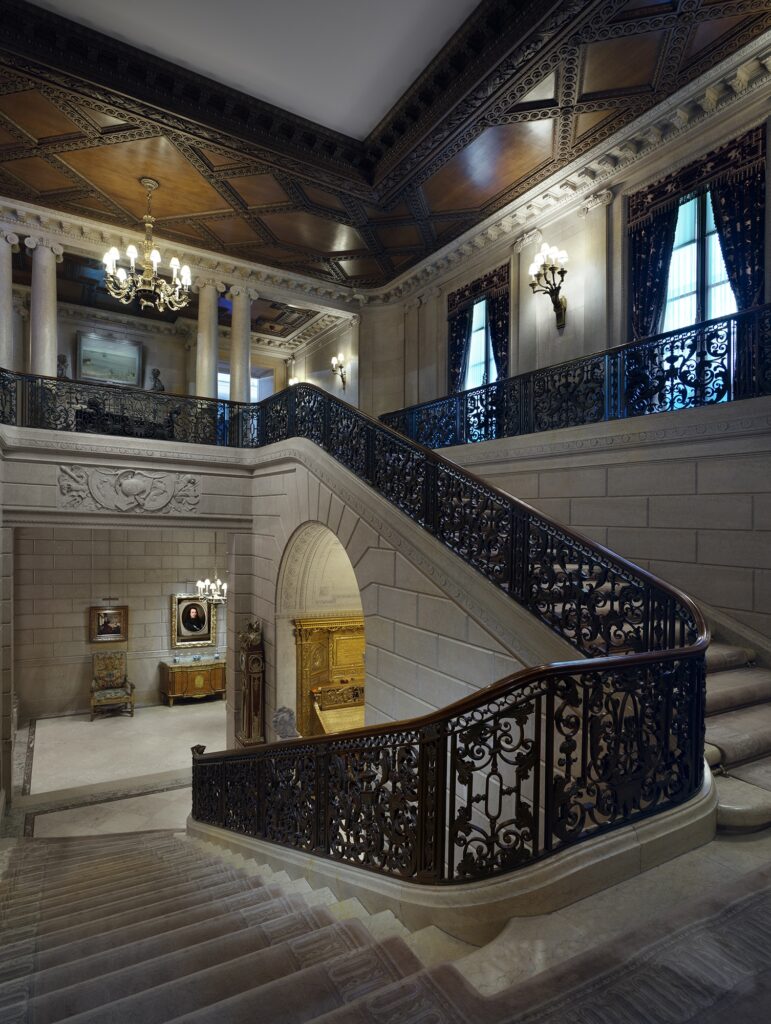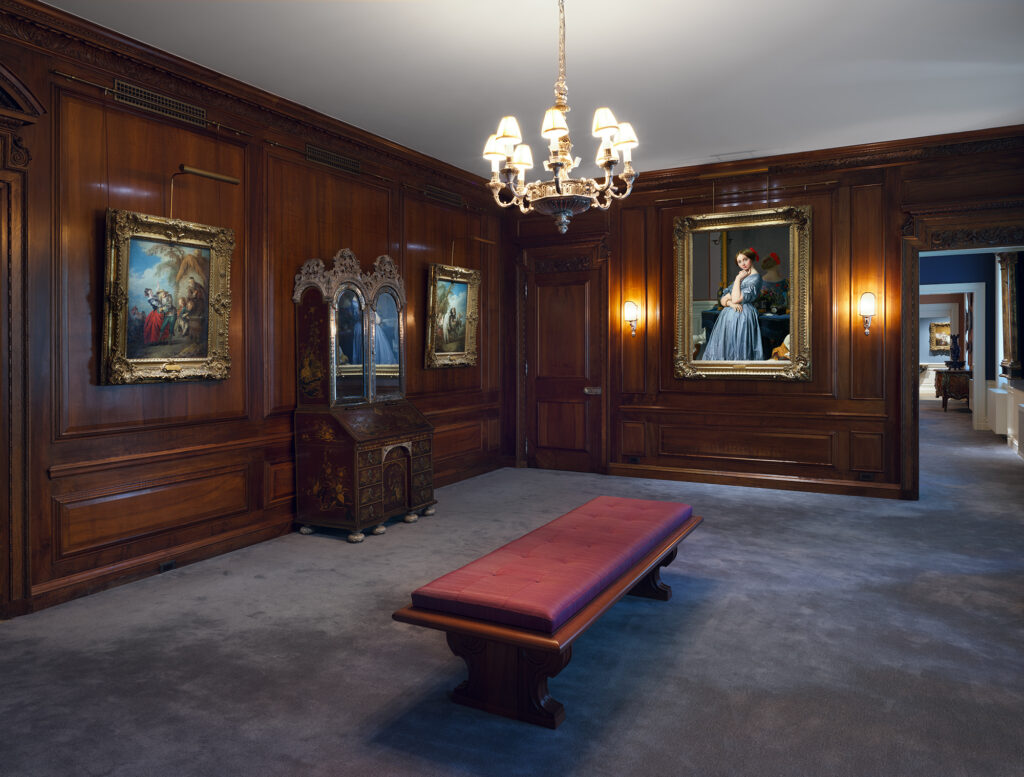Rest Easy, Art Lovers, the Frick Collection’s Renovation Hasn’t Spoiled the Views
The Frick Collection is set to re-open on April 17 after having had its doors shut for some five years, and it’s time for a collective sigh of relief.

The Frick Collection has long had a policy of not allowing children under the age of 10 onto the premises. After having attended a preview for the “renovation and enhancement” of the Manhattan museum’s 70th Street location, I would add an additional stipulation: Klutzes should suffer a similar banishment — at least, from the portico gallery.
It’s within this narrow, sun-dappled space on the west side of the Frick mansion that viewers can take in a host of decorative items made of porcelain. These vases, cups, and figurines were gifted to the Frick by a late financier, Henry H. Arnhold, and are displayed on individual shelves without the caution of protective vitrines.
These eminently breakable objects are, ostensibly, held secure. All the same, a museum guard was repeatedly peppered with questions about the works’ open-air vulnerability. As someone who has never failed to find the smallest obstacle upon which to stumble, I gauged my steps with deliberation.
The Frick Collection is set to re-open on April 17 after having had its doors shut for some five years. Do you remember the foofaraw that resulted upon the 2015 announcement that the museum would be attaching a 60,000-foot addition at the expense of its reception hall and garden? If politics makes for strange bedfellows, the same can hold true for architecture.

The redoubtable New York Times found common cause with the conservative City Journal. At the former, the typically sanguine Michael Kimmelman fretted that the museum’s proposal would be a “self-inflicted wound”; the sub-heading of Catesby Leigh’s article spoke of its “mutilation.” Folks from all points on the political and aesthetic spectrums had their knickers in a twist about what the Frick was up to.
A variety of art world machers petitioned the museum’s board of trustees, the NYC Landmarks Preservation Commission, and the mayor at the time, Bill de Blasio, to beg the Frick to “consider alternative methods of expansion that would preserve the character essential to its appeal.” A former director of the Frick Collection, Everett Fahy, wrote: “I can’t believe anything close to the current designs would be approved … it’s awful.”
Fahy lived to see the original set of plans scuttled, but not the finished renovation: He died in 2018. Nor did Fahy walk through the collection once it was put on temporary display at the former home of the Whitney Museum of American Art. Staples from the Frick Collection stood up well at the cavernous byways of Marcel Breuer’s brutalist edifice at 945 Madison, but just what was going on at the old digs?
After having visited the completed efforts of Selldorf Architects and Beyer Blinder and Belle, I can report that … no harm has been done. Anyone who has kept half an eye on the art scene had cause to worry: Even the most august of institutions or chary of curators have shown themselves vulnerable to fashion and, with that, folly. Not a few of us held our breath the other day as we walked into the Frick. Had the home of Vermeer, Bellini, and Piero been strong-armed by some-or-other museological hijinkery?

It’s time to breathe a collective sigh of relief. The Frick Collection remains, in fact and in essence, what it has been since the American industrialist Henry K. Frick imagined the place and the architect Thomas Hastings put it into motion: a gracious — dare one say civilized — setting for a supernal array of masterpieces.
True, there’s been shuffling, sorting, and additions made, including a conservation studio, a change of venue for the coatroom, a 218-seat auditorium, and (ahem) “the restoration of the 70th Street Garden, now visible from multiple new vantage points throughout the building.”
Among the most significant changes is the opening of the museum’s second floor. The annoying velvet rope preventing our ascending that beckoning grand stairwell? Gone. The former bedrooms, dining nooks, and maids’ rooms of the Fricks have been converted into a suite of intimate galleries in which visitors can commune with artworks in a familial manner. Was George Romney’s “Emma Hamilton” (1782) the last work of art Henry Clay Frick saw upon going to his great reward? Given the picture’s centrality, that’s not at all unlikely.
The main galleries are much as they were back in the day, though Ingres’s “Portrait of Comtesse d’Haussonville” (1845) is now ensconced upstairs in the so-called walnut room and Bellini’s “Doge Giovanni Mocenigo” (circa 1485) looks over the museum’s collection of medals in what is the flashiest installation on display.
Otherwise, the Frick Collection is back at its unflashy best. If it ain’t broke, don’t fix it: a prudent bit of counsel that has been put into full effect at Manhattan’s Upper East Side.

